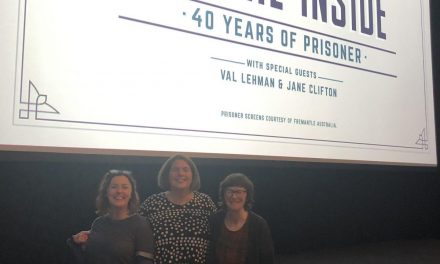The universe is made of stories, not of atoms.
Muriel Rukeyser
This is an intimate account of the ways in which the moving image enters and energises the stories that we tell one another on Facebook. It is not meant to be a taxonomy of the different audio-visual forms that are shared, liked and commented upon. Neither is it an attempt to assess the relationship between the commodity and promotional inter-texts that colour these screening feeds and interfaces.
While the home movies, news stories, television clips, films, and YouTube videos shared on Facebook are often apart of a viral communion or community of forces whipped into shape by their noted uniqueness or perceived importance, they also form a biography of the living self, one being made and retold at these very moments of interaction.
This is a story about stories; the ones in the rectangular boxes that we sometimes open to watch some new content recommended to us by friends; and the ones that we weave around these clips and segments, through our comments and shares. This piece is about the storytellers we are and how each person’s feed is a particular and personal embodiment of stories of the self and of their friendship community – their hopes, fears, hurts, and aspirations powerfully cast in moving image form. Of course, regular written and pictorial posts are part of this telling tapestry but this is not the focus of this blog.
This blog is also indirectly an account of how a version of ‘television’ has migrated to the Facebook page, with its interface representing a mobile ‘home’ or domestic lounge, and the various clips and shows, videos and grabs forming a particular chaotic transmedia viewing schedule, running like a pleasuring bubbling stream across the user’s pages.

Narrative patterns can emerge across a person’s Facebook profile page through the moving images that they circulate and share. One can obviously determine ‘macro’ character realities such as a person’s political affiliation, sexuality, family and relationship status, entertainment and sports interests; and discern idiosyncratic and common personality traits that emerge through the moving image content they seek to share and comment upon. A great deal of excellent research already exists on exploring this type of profiling.
Nonetheless, even here in the arena of establishing relatively stable personality traits, searing emotional responses can be found. An example that I recently followed was a response to the Californian killing spree undertaken by Elliot Rodger. The person in questioned rallied against the media news representations that readily published his videos and which were being endlessly shared on Facebook; placed his murderous misogyny within a narcissistic celebrity culture; and framed their own loathing in terms of the way women are violated within the audio-visual streams of perverse patriarchy.
But this person’s response wasn’t simply about women in general, a necessary abstraction, but her own embodied and storied self as she reflected upon the events across the folds and flows of her everyday life.
This is what I am really interested in: the ‘micro’ stories that also emerge or are made in the moment of the live, and originate from what the person is feeling, going through, and memoralising at that time in their life. The Facebook ‘ticker’ itself creates a roll of credits down the side of the page so one is invited into numerous independent and interrelated stories – like a soap opera where real-life dramas rise and fall, and begin again.
At the exact hour the moving image is posted revelations, feelings and states of mind are being communicated. These can be seemingly mundane and banal, of course, such as posting a mobile phone clip of what one is having for breakfast, or of the queue of people at the train station on a grey commute home. But they can of course be symbolic and direct registers and projections of heartache, outrage, alienation, longing, loving, hoping, and depression framed by and within the unconscious and conscious thoughts of the person posting.
When one looks at the moving image material shared across someone’s entire day, week or month’s feed, an intimate and wonderfully rich story of who they are emerges. One’s living biography is powerfully brought into the open through their film and music video choices, television show airs, amateur footage and promos posted. The anchors they provide to explain or introduce it, and the comments they might add in response to likes and comments, weave their storied self into the conversations and intimacies being enacted. Friends are explicitly tagged and invited to share in the stories unfolding. Stories grow, new audio-visual is added, and the self grows with it.
Of course, recognizing someone’s story isn’t always that visible, empirically measurable – secret codes are in evidence, and ‘winks’ and nods’ to those in the know complicate the plot and sub-plots, and thicken the interactions. And the carnal biography that emerges through their liquid feeds maybe as much wish-fulfillment and representation as the flames of the existential, phenomenological self revealed. Nonetheless, some version of the vibrant and meaningful self emerges out of all this screen culture. The uneven truth of selfhood emerges, no less.
My own Facebook feed is testament to the way I story my feelings, memories and emotional state through my audio-visual postings. You can see the schedule and programming of my moods, interests and obsessions through my Facebook moving image stories. When I am blue and hurt and missing a lover temporarily absent or perhaps long gone, I post songs and movie clips that speak that truth or which (secretly) connected us in some way. Threads – taut, loose, and barely visible to the naked eye – emerge across the life of my page. When I long for my children who live overseas I post YouTube stories that I have made for them. When a particular effecting content hits my feed or I find it elsewhere I make sense of it in terms of my own biography. I story the stories I encounter, inserting myself into them, and they into my life. I am an over-sharer; a natural Facebook storyteller.

These are not just macro stories but micro moments crytalised in terms of proximity and distance, self-worth and self -belonging. A complex picture of my psychology emerges from exploring the storied detail contained in each feed and through the cross-fertilisation that is carried on continually. The uneven truth of my selfhood has begun to be storied on Facebook.
A case in point was the ‘First Kiss’ video that went viral:
’20 strangers were asked to kiss for the first time on camera, and it’s fantastically awkward and adorable. I love that everyone just smiled and giggled throughout the whole thing!’
The video was first purported to be an authentic video installation capturing real strangers kissing for the first time. I posted this and numerous friends commented upon its beauty, and how it demonstrated that in a world of ‘togetherness dismantled’ everyday people would willingly and easy connect. This is one of the cornerstones of my storied self, as it is many of my friends – the (romantic) belief in humankind’s ability to embrace one another if given the chance and in spite of the metallic logic of liquid modernity. The post allowed us to share our own stories of by-chance-intimacy, and to add video material that echoed the affecting sentiments of the First Kiss. Intimacy grew between us as we shared these stories of love and hope.
The posting of the First Kiss did something else though: it situated our stories within the realm of the senses and sensuous aesthetics since it was what we felt – in our leaky bodies – that framed our responses. It was as if that if only we could get go of language, representation, we might arrive at somewhere more truthful. I don’t see these stories as occurring in second-order environments, but in lived and living encounters, where we bring our full sensibilities to bear on the interface.
When the First Kiss video was later revealed to be an advert for the clothing brand Wren Studio it produced a debate amongst many of the same friends – on how disappointing it was, as if our heart-felt responses had been taken away from us, rendered naïve and invalid in the face of this corporate, neo-liberal truth.
My response was to say this was not necessarily so; that what really mattered was the feeling that we first felt when encountering the video; that embodied affects still mattered. They couldn’t take away that from us. This, of course, is one of my stories – the search for and belief in the asemiotic experience – to see my selfhood emerging out of the logic of sensation. Colours, textures, shapes, and intensities of all manners story my Facebook page. And the story of my Facebook television is one shaped by micro affects, played out in/on screens where what matters is modes of affective expression.
What’s on my mind, Facebook?
Stories and the power of storytelling
Sean Redmond is an Associate Professor of Media and Communication at Deakin University, Melbourne, Australia. He writes on stardom and celebrity, science fiction, screen aesthetics, and authorship. His latest book is The cinema of Takeshi Kitano with Columbia University Press (2013).
Sean Redmond, Deakin University, Melbourne: s.redmond@deakin.edu.au





